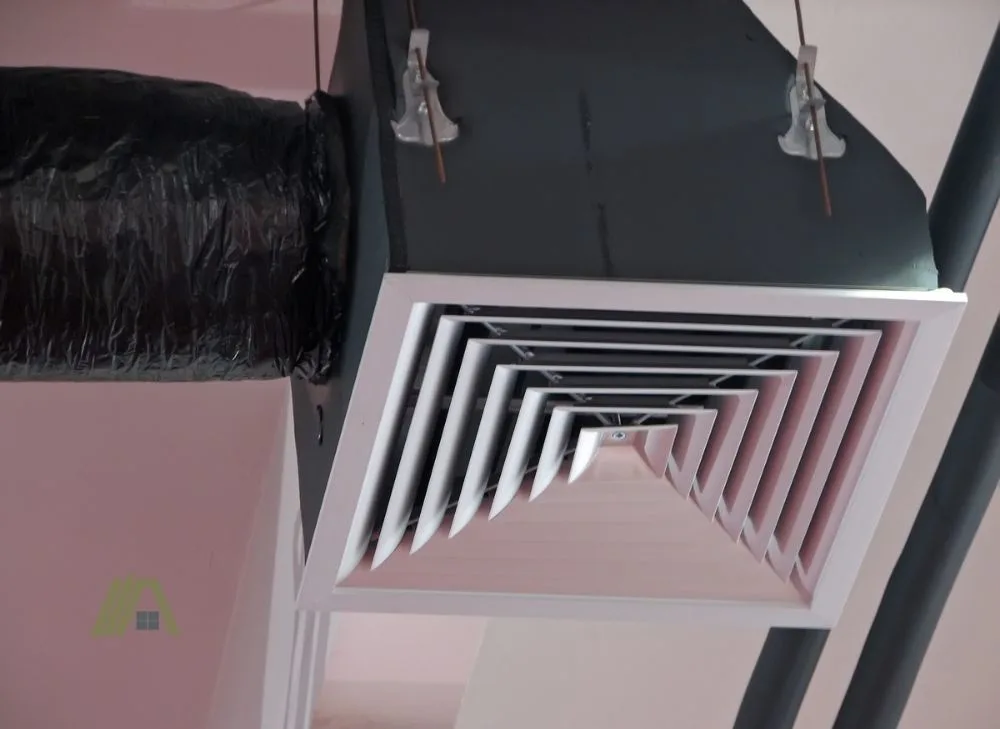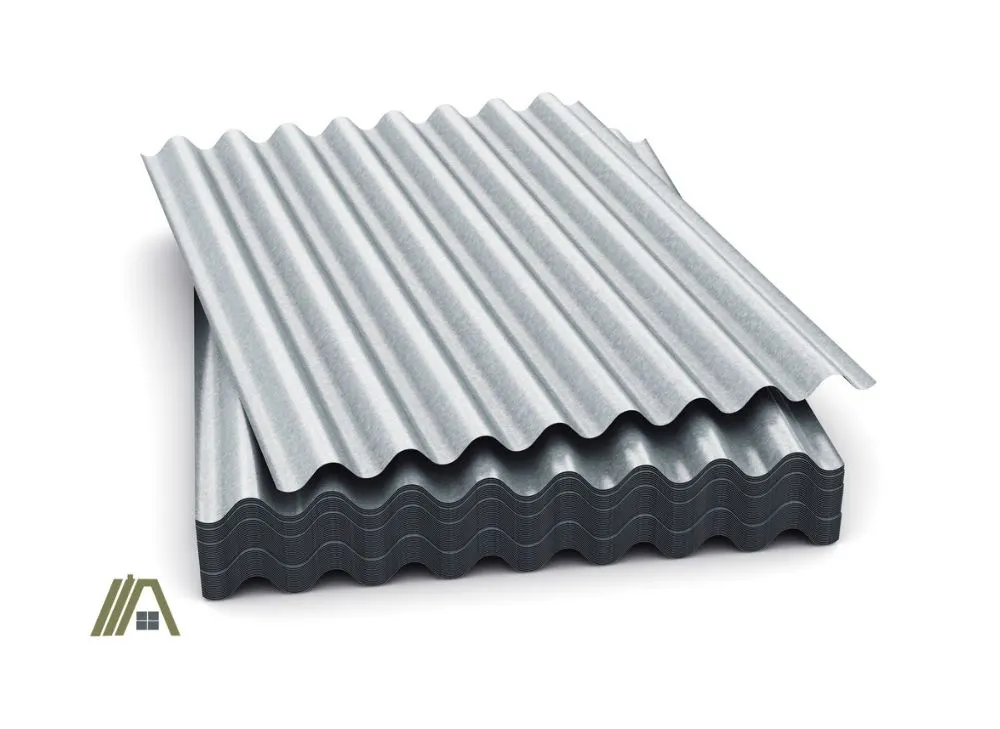Ducts are an essential part of vented dryers. They perform the important function of exhausting humid air to the outdoors. As a result, special attention is given to the duct material.
Galvanized ducts are popular in the world of ventilation and exhaust systems. In this article, I provide helpful information on the different types of galvanized ducting. I also highlight the International Residential Code (IRC) requirements for dryer duct materials.

Galvanized sheet metal is the best for dryer ducts. It is metal, at least 0.0157” thick, and has a smooth interior. Galvanized spiral ducts are made from sheet metal, but the inner surface is gently ridged. Clear its use with a professional. Flexible ducts are often too thin, with ridges on the inner surface.
Minimum Requirements for Dryer Duct Material
Dryer ducts are designed to exhaust humid air to the outdoors.
The International Residential Code (IRC) provides the minimum regulations for residential building projects, with Section M1502 outlining the requirements for the installation of dryer exhaust systems.
The IRC says that the dryer manufacturer’s instructions should be followed when installing a duct, but specifies some basic requirements. For example, dryer ducts must be independent of other systems like the chimney or bathroom exhaust vents, which is important to contain dryer lint.

Fabrics shed lint while they are being tumbled in the dryer and a significant portion of the lint goes into the duct. Lint is known to be flammable, so dryer ducts must be made from fire-resistant materials that should also ensure that the risk of lint accumulation is as low as possible.
Here are the IRC requirements for dryer duct materials found in Section M1502.4.1:
- Dryer ducts should have a smooth interior finish.
- Ducts should be constructed with metal.
- The metal must not be less than 0.0157″ in thickness.
Although most states go with established IRC dictates, some cities have unique requirements. So, it’s best to check your local codes as well.
Now, does galvanized ducting meet these requirements?
Types of Galvanized Ducting
Galvanized ducts, which are steel metal ducts with a protective layer of zinc, are allowed by the IRC, but only if they meet the above-stated requirements, which not all types do. Being made of steel, galvanized ducts all meet the one requirement: they are made from metal.
But what about the smooth interior surface and the thickness?
Flexible Galvanized Steel
Flexible galvanized steel is designed to offer both the strength of galvanized steel and flexibility. Thus, they are relatively lightweight. They are most ideal for low-pressure ventilation or exhaust systems.
The interior finish of flexible galvanized ducts isn’t completely smooth. Instead, it features ridges throughout the interior and exterior length of the duct. Ridges trap lint and create resistance to airflow, which also leads to lint deposition.
Unlike foil flexible ducts, the ridges in flexible galvanized steel ducting aren’t deep, so they do not have such a large impact on airflow and lint collection. However, there are still ridges and so they violate the code and pose a risk to safety.
Flexible galvanized steel ducts can come in thicknesses as low as 0.0007″ (0.018 mm), which is well below the minimum IRC thickness requirement of 0.0157″ (0.3950 mm). You can also find flexible ducts with a thickness of 0.0394″ (1.0 mm).
This means that even if flexible duct was code-compliant in other areas, you would have to be very careful about what thickness of ducting you purchased. This is particularly important if you choose to use flexible duct anyway.
Flexible galvanized ducts can be used as the transition ducting for a dryer, but they cannot be concealed in the walls or floor. They must be easily accessible for regular maintenance and emergencies.
Galvanized Spiral Ducting
Galvanized spiral ducting is a popular duct design for ventilation and exhaust systems. It is a spirally wound pipe that is manufactured from galvanized steel sheet, which ranges in thickness from 0.0157-0.0787″ (0.4-2.0 mm), making it code compliant in terms of being metal and of an appropriate thickness.
Spiral ducts do not impede airflow or catch lint because the interior surfaces of these ducts are relatively smooth. Because they are not completely smooth, I would hesitate to use spiral ducting for a dryer without consulting a professional.
If you can or do end up using spiral ducting, then there are other benefits. The spiral design helps to equalize the pressure as air flows out of the duct. By equalizing the airflow, the duct reduces the noise that’s released due to reverberated air pressure.
Galvanized Sheet Metal
Galvanized sheet metal ducts are made with straight rigid metal, averaging 0.0157-0.0787″ in thickness.
The interior of a sheet metal duct is smoother than that of both galvanized spiral ducting and flexible galvanized steel ducting.

Their smooth interior surface allows air to flow freely without friction. It also makes it less likely for lint to collect. This makes them ideal for commercial usage and in households that run the dryer a lot.
If you want to use galvanized steel for your ductwork then galvanized sheet metal is the top choice.
One thing to note about galvanized sheet metal is that it isn’t the easiest to work with. They cannot be bent so they are usually assembled with elbow fittings that allow the duct to turn 45° or 90°. The more elbows you add, the shorter your duct can be.
For optimal dryer duct performance, it’s best to pair a good galvanized steel sheet metal with fiberglass insulation.
Sources
https://codes.iccsafe.org/content/IRC2021P1/chapter-15-exhaust-systems
https://www.nachi.org/dryer-vent-safety.htm
https://www.flexduct.co.za/products/semi-flexible-ducting-galvanised-steel-flexible%E2%80%8B/#
https://www.kaempfandharris.com/industry-news/the-difference-between-rectangular-and-spiral-ductwork
